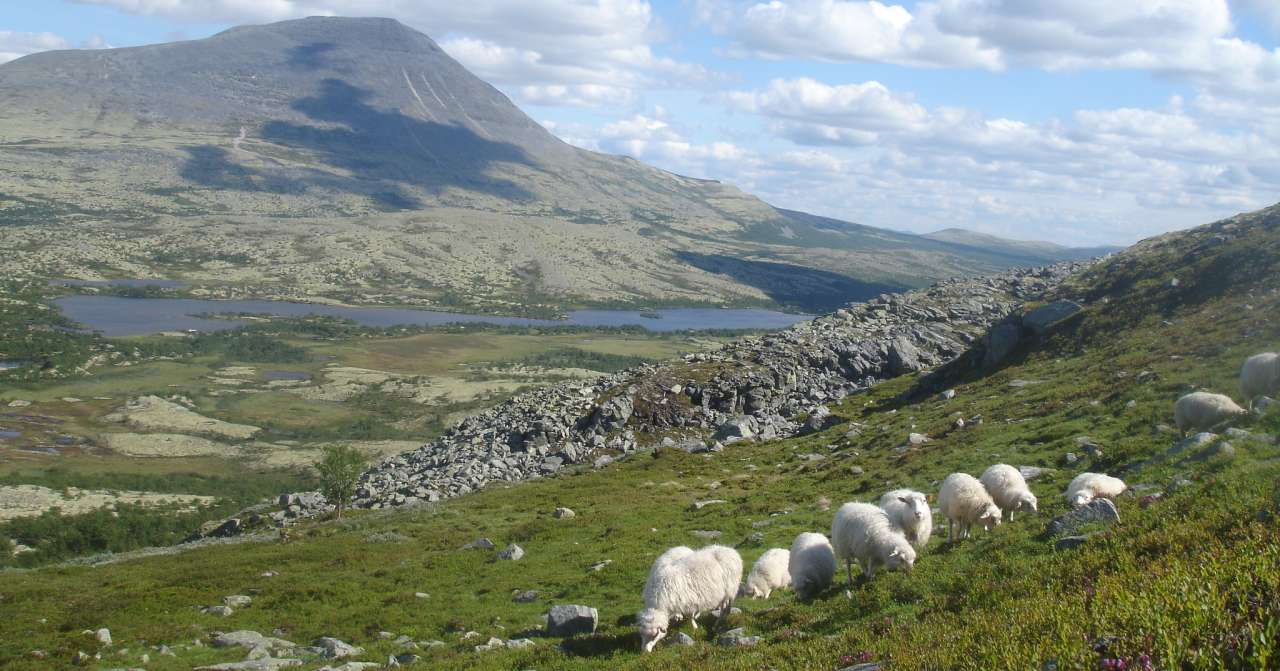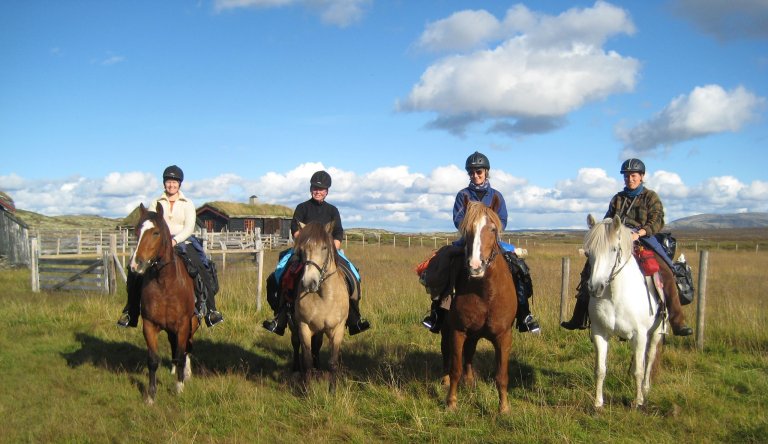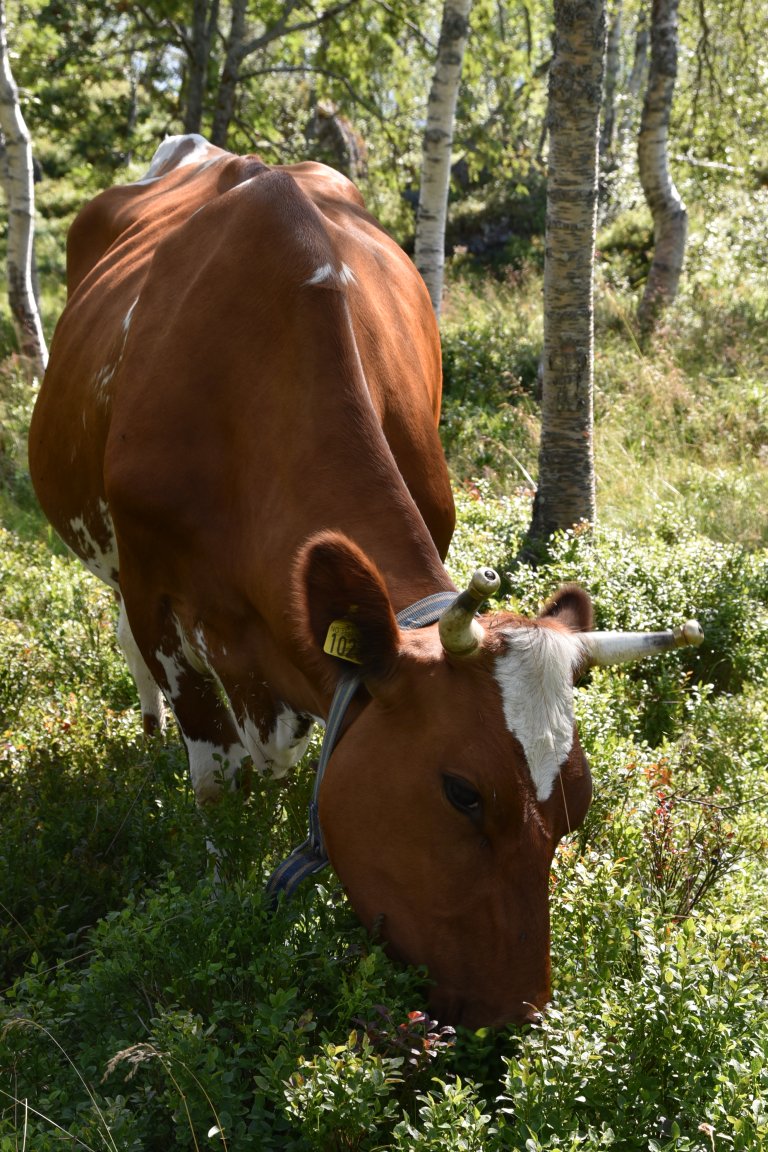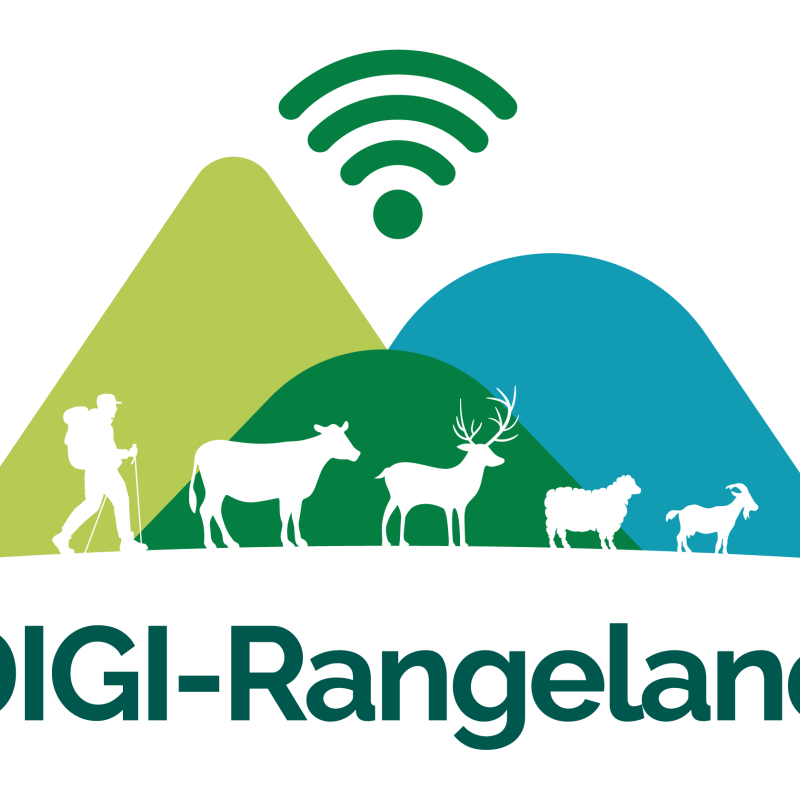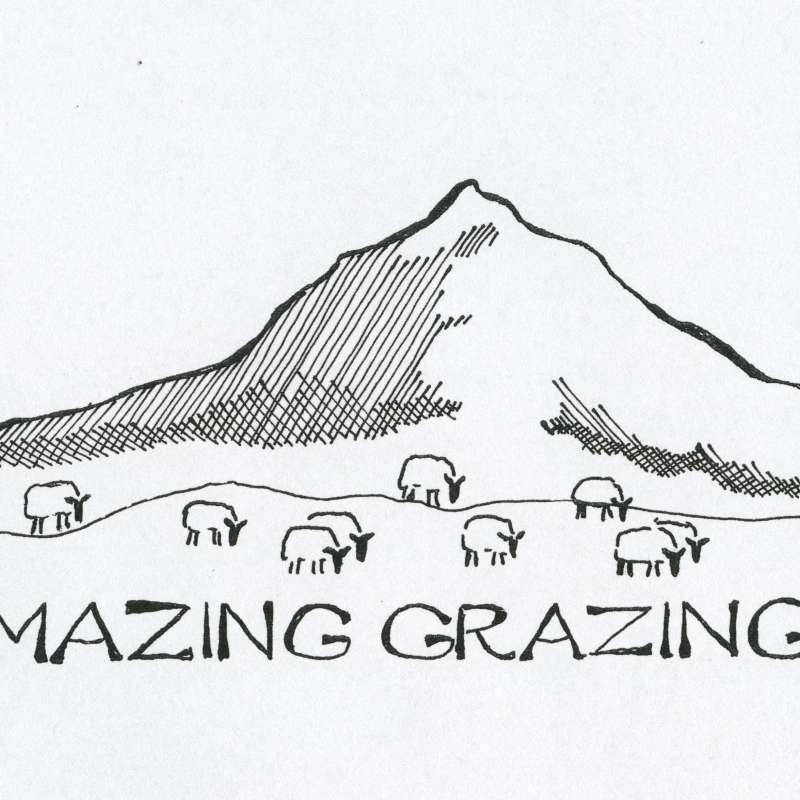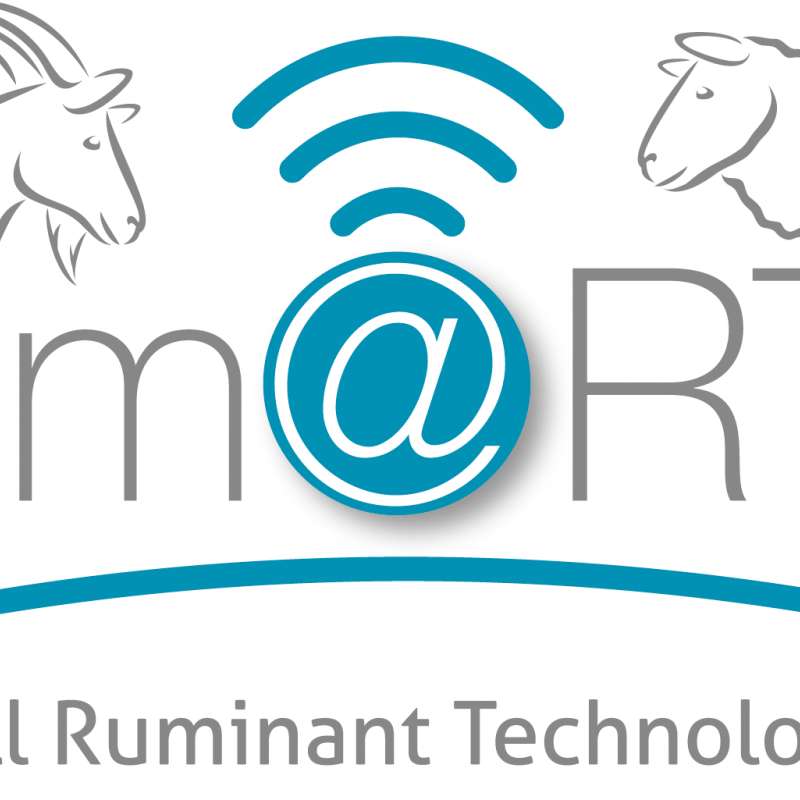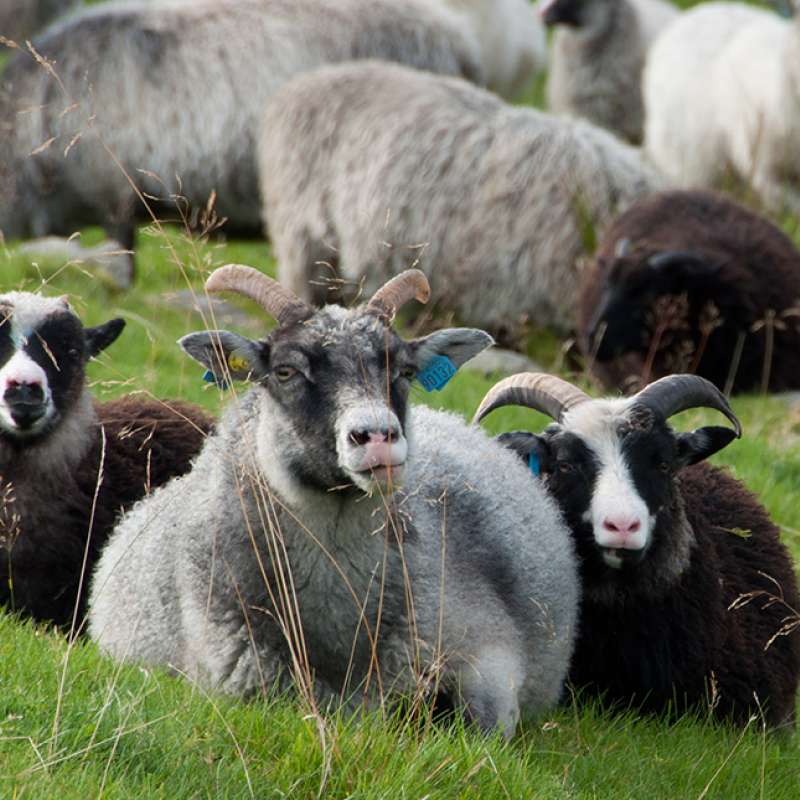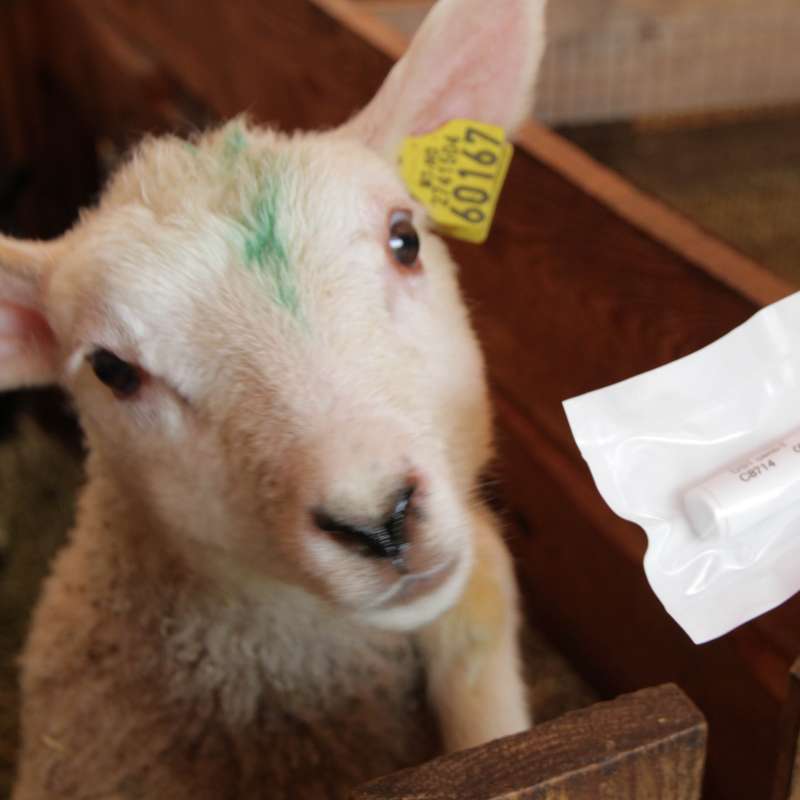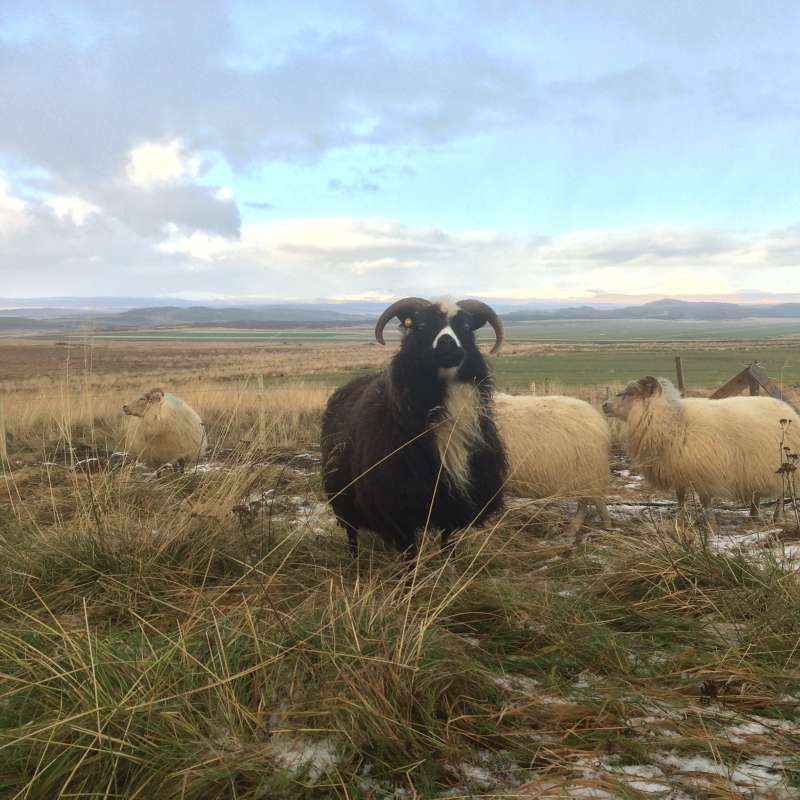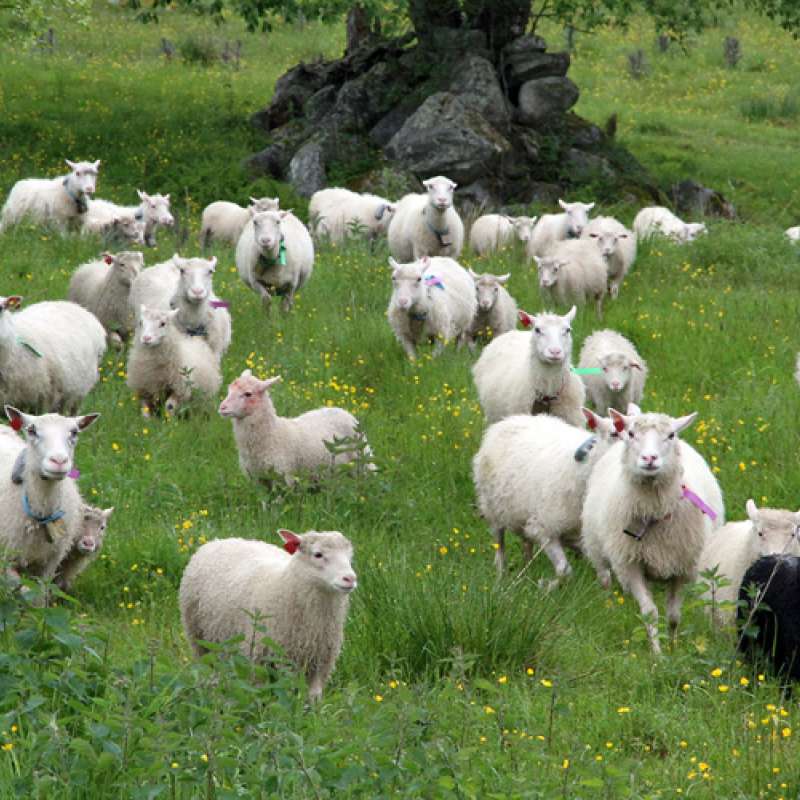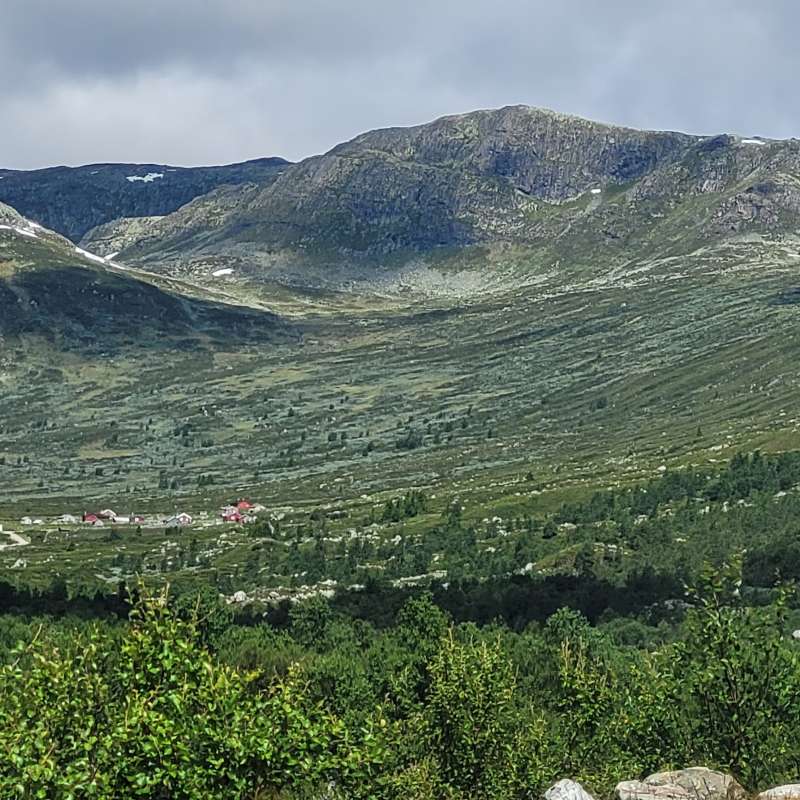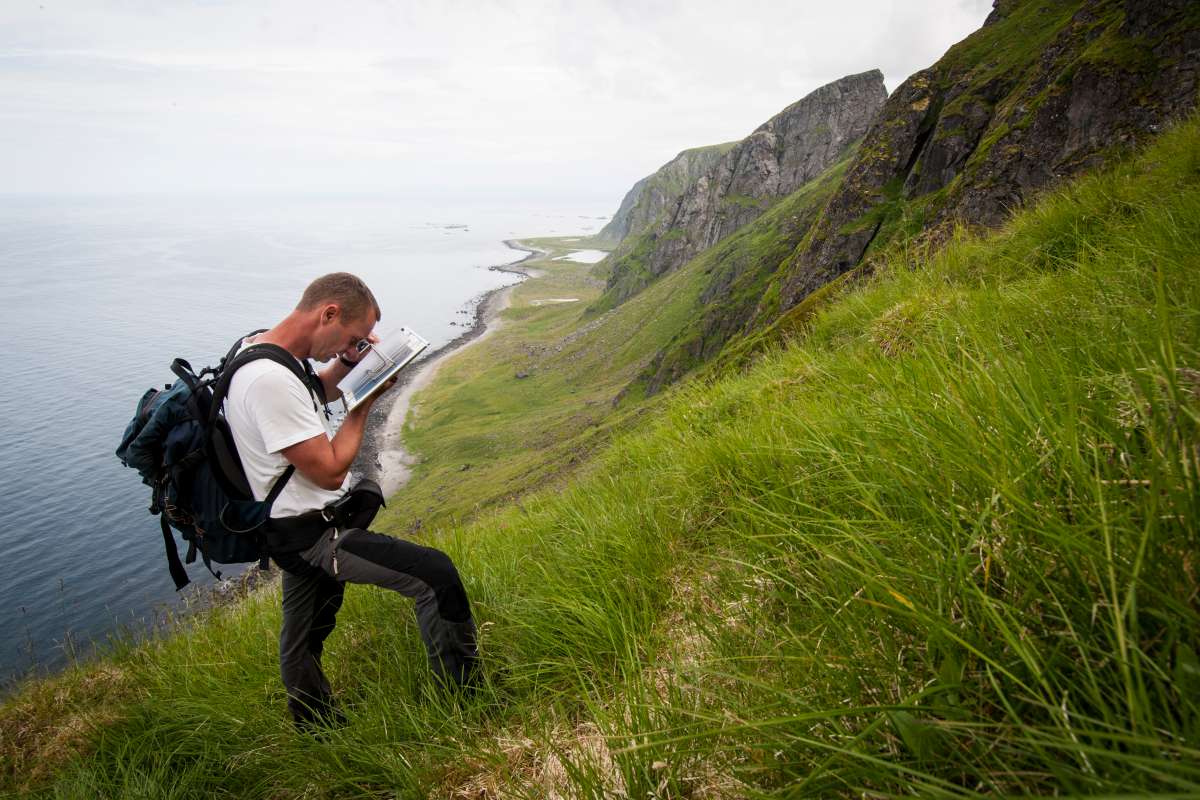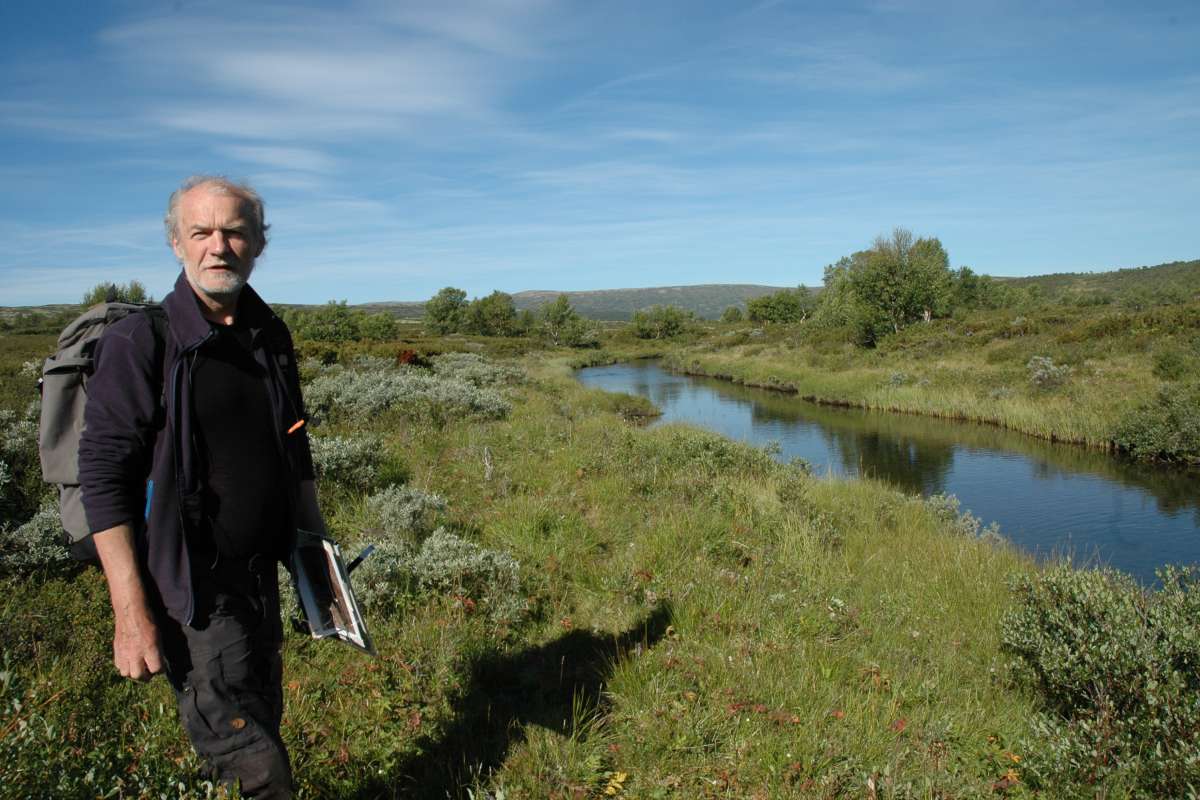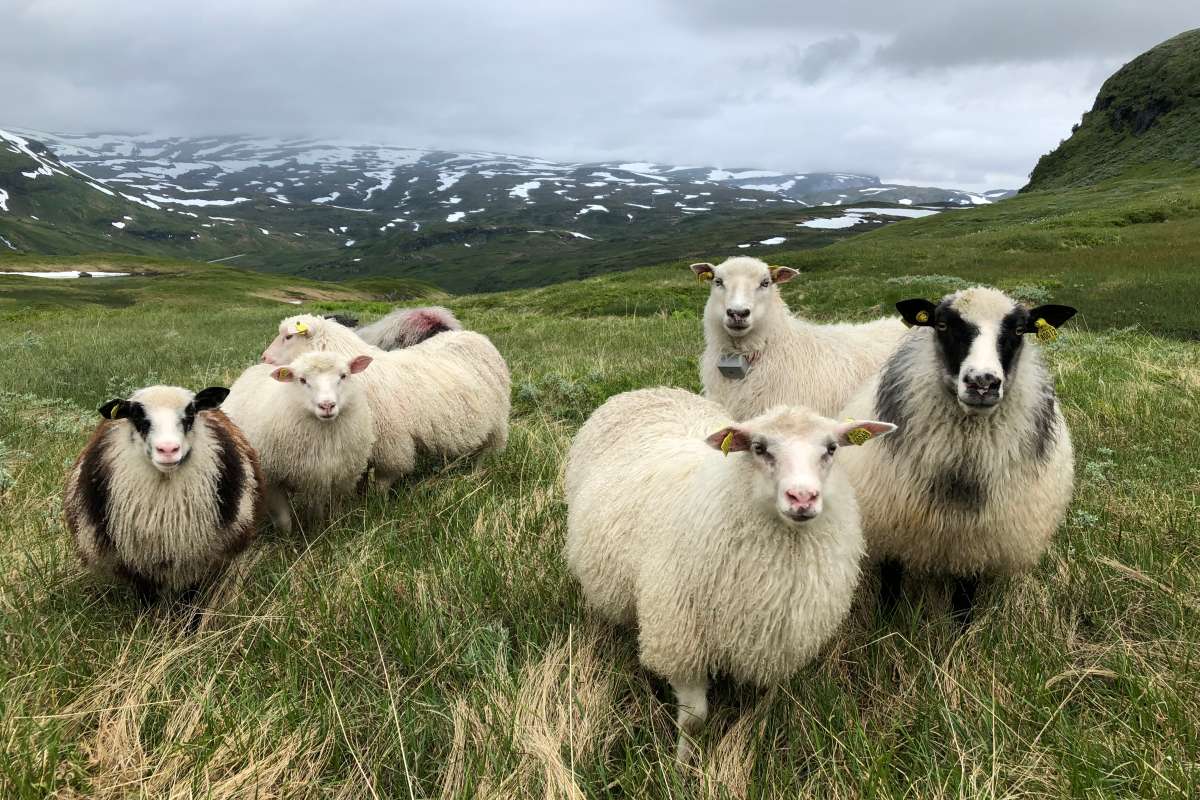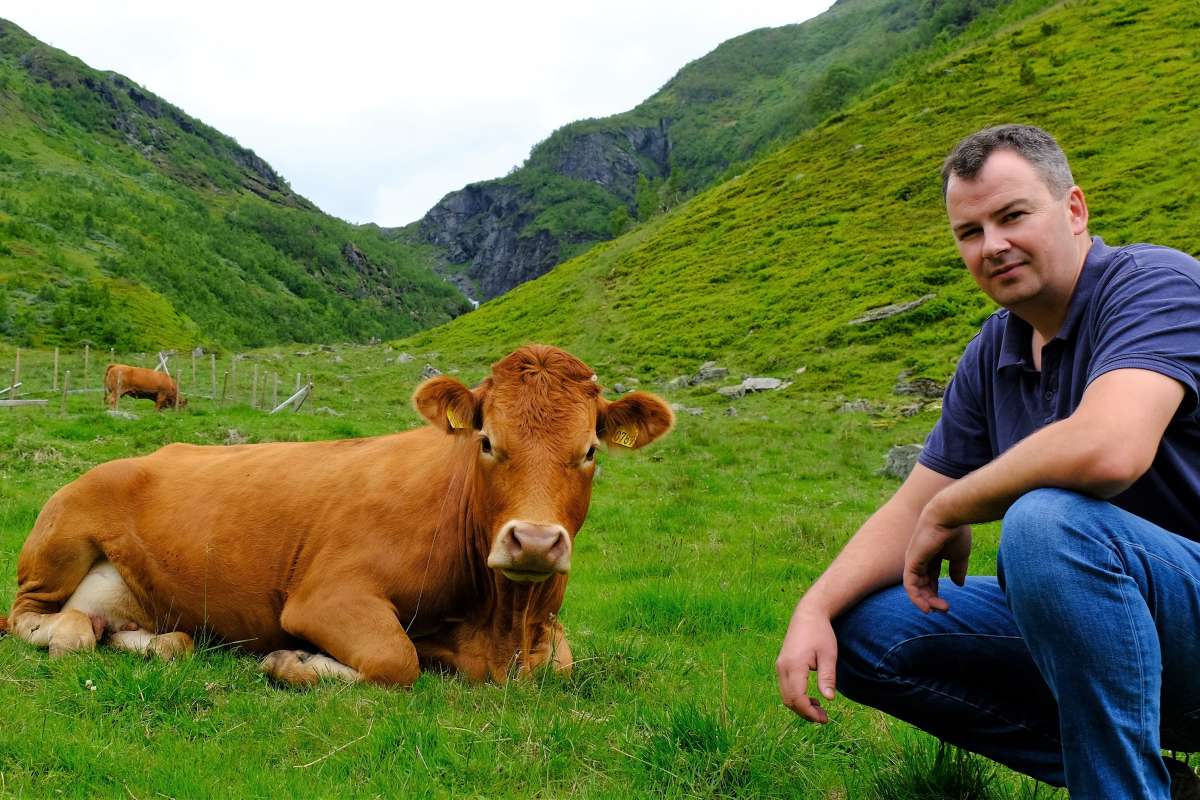Mange husdyr i fjellet
Fjellkommunene i Sør- og Midt-Norge huser ca. 22% av melkekyrne, 22% av ammekyrne, 30% av sauene og 46 % av mjølkegeitene i landet (basert på produksjonstilskuddstall fra fjellkommuner 2020). Om sommeren slippes husdyr på beite i fjellet fra også andre områder, og vi antar at over 1 millioner sau og over 70 000 storfe beiter i fjellet. Det er en tendens til nedgang i antall mjølkekyr i fjellkommunene, mens antallet ammekyr øker. I fjellet, slik som ellers i landet, øker bruksstørrelsen, men bruka med melkekyr i fjellområda er mindre enn i andre områder. Sauebruka er derimot gjennomgående større i fjellområdene enn ellers i landet.
Reindrift er også en viktig del av fjellandbruket, og omtales på en egen temaside som det er lenket til nedenfor.
Forskningstema i NIBIO
NIBIO sitt arbeid med husdyrhold og beitebruk i fjellregionen er knyttet spesielt til småfe, storfe og hest. Sentrale fagområder er beitebruk på inn- og utmark, fôring, produktkvalitet, dyrehelse og -velferd, atferd hos dyr, rase som er tilpassa ressursgrunnlaget og klimaforskning. Bruk av teknologi for overvåking av husdyr, både som hjelpemiddel for bonden og for å sikre at dyra har det bra, er et viktig arbeidsfelt i NIBIO.
Flerbruksinteresser i utmarka gir utfordringer for husdyr på beite. Hyttebygging, friluftsliv og rovdyr er noen viktige faktorer som påvirker husdyra sin bruk av fjellbeitene. Flerbrukshensyn i utmarka er en sentral utfordring som må forståes i en helhetlig kontekst.
NIBIO sitt arbeid med beitekartlegging og beitebruk har gitt oss ledende kompetanse på husdyra sin utnyttelse av utmarksbeite. Denne kompetansen er viktig for videre arbeid med å forstå hvordan husdyra i fjellandbruket skal være del av en bærekraftig utvikling.


